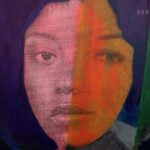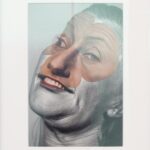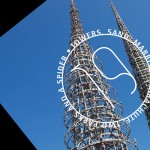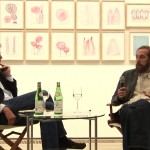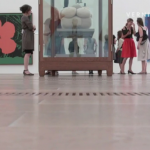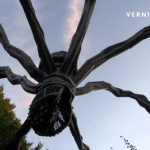In 1949, the book ‘The Second Sex’ (Le Deuxième Sexe) by the French philosopher, writer and feminist activist Simone de Beauvoir was first published. At the dawn of the seventieth anniversary of the book’s first English translation (1953), the current exhibition at Hauser & Wirth Zürich reflects on Beauvoir’s milestone study with, and through, contemporary art. Curated by author, exhibitions curator and art historian Dr. Sophie Berrebi, the show brings together works by Louise Bourgeois, Geta Brătescu, Eva Hesse, Roni Horn, Zoe Leonard, Lee Lozano, Annaïk Lou Pitteloud, Cindy Sherman and Lorna Simpson. While some artists like Eva Hesse and Louise Bourgeois refer directly to Simone de Beauvoir in their personal writings, ‘Seventy Years of The Second Sex, A Conversation Between Works and Words’ presents works that stimulate different interpretations of Beauvoir’s words. This video provides you with an exhibition walkthrough and an introduction to the show by Dr. Sophie Berrebi. The exhibition is on view now through 21 May 2022 at Hauser & Wirth Zurich, Limmatstrasse.
Seventy Years of The Second Sex / Group Show at Hauser & Wirth Zürich. Zürich (Switzerland), March 24, 2022.
> Right-click (Mac: ctrl-click) this link to download Quicktime video file.
Exhibition text:
How does Simone de Beauvoir’s 1949 book ‘The Second Sex’ read today for an artist? And how does it affect the way we look at art made since the book was published? This March, Hauser & Wirth brings a group exhibition titled ‘Seventy Years of the Second Sex. A Conversation between Works and Words’ to its gallery on Limmatstrasse in Zurich, to initiate a reflection on Beauvoir’s milestone study with, and through, contemporary art. At the dawn of the seventieth anniversary of the book’s first English translation (1953), this exhibition, curated by Dr. Sophie Berrebi, brings together works by Louise Bourgeois, Geta Brătescu, Eva Hesse, Roni Horn, Zoe Leonard, Lee Lozano, Annaïk Lou Pitteloud, Cindy Sherman and Lorna Simpson and that converse with Simone de Beauvoir’s ideas and their legacy.
‘The Second Sex’ dissects the ways in which, through history and through stages of personal life, woman is defined within patriarchy, as other. Steeped in existentialism and phenomenology, and drawing on sources from fiction, literary testimonies, sociology and psychoanalysis, the book enacted a dialogue with the civil rights movement, set the stage for the second wave of feminism, and laid the ground for theorisations of gender. Some aspects are inevitably dated, but Beauvoir’s persuasive and implacable exposé of woman’s alienation through mechanisms of social, economic, and psychological domination, remains ultimately a formidable call to action and transformation of society.
Dr. Sophie Berrebi writes: ’The works on display in this exhibition in some cases appropriate ideas from ‘The Second Sex’. In others, they might illuminate, muddle or complicate them or underscore the blind spots in Beauvoir’s thinking. In all cases, they continue the conversation.’
While some artists like Hesse and Bourgeois refer directly to Simone de Beauvoir in their personal writings, ‘Seventy Years of The Second Sex, A Conversation Between Works and Words’ presents works that stimulate different interpretations of Beauvoir’s words. These interpretations are articulated through a direct engagement with themes of ‘The Second Sex’ such as domestic alienation, identity, dressing up, patriarchy or the strife between immanence and transcendence. Eve Hesse’s painting ‘Untitled’ (c. 1960) is part of her very private series ‘Spectres’ that Hesse did not exhibit during her lifetime. In the works from this series, she ‘paints herself out,’ working through form and material in an act of vulnerable and even painful introspection. Louise Bourgeois’ sculpture ‘Femme Maison’ (1994), features a woman’s figure with a house in place of the head and can be read as a direct statement about the woman being boxed into in household activities. Bourgeois’ initial ‘Femme Maison’, a series of drawings fusing architecture and the female figure, appeared in the mid-40s, one of which is also featured in this exhibition. Lee Lozano’s tool drawings and paintings, made in 1963 and 1964, can be understood as critiques of both sexual and art world decorum at a moment when the feminist movement had yet to coalesce and actively question either. These works also allowed Lozano to explore her own womanhood and her individuality as an artist at a moment when gender roles were being radically redefined.
The far-reaching influence of the book means that it can been ‘read’ in a variety of ways. One of these is through the writing of subsequent generations of scholars whose work take ‘The Second Sex’ as reference or departure point, such as Linda Nochlin and Judith Butler. Whether or not they engage with Beauvoir’s words directly, the works brought together in this exhibition all speak to her ideas and her intellectual legacy. In ‘Vantage Point’ (1991) Lorna Simpson juxtaposes her own verso portrait with that of a face mask, alluding to an African heritage without declaring it and each image is presented out of context. The simple terms ‘inside’ and ‘out’ frame the questions evoked by the juxtaposition: What is the relationship between public bodies and private selves, between heritage and lived experience? How are we complicit in constructing who, and what, we see?
About Dr. Sophie Berrebi
Dr. Sophie Berrebi is an author, exhibitions curator and art historian. She is an associate professor in the history of art at the University of Amsterdam where she teaches and researches photography, fashion, and contemporary art. She has curated exhibitions for museums and galleries including the Stedelijk Museum, Amsterdam and Hauser & Wirth Zürich, where she organised ‘Jean Dubuffet and the City’ (2018). Alongside numerous articles and essays, she is the author of ‘The Shape of Evidence. Contemporary Art and the Document’ (Valiz, 2015), and ‘Dubuffet and the City’. People, Place and Urban Space’ (H&W Publishers, 2018), which received the 2019 Richard Schlagman award for best book of art history. Her first novel, ‘The Sharing Economy’ will be published by Scribner (Simon & Schuster) in 2023.
